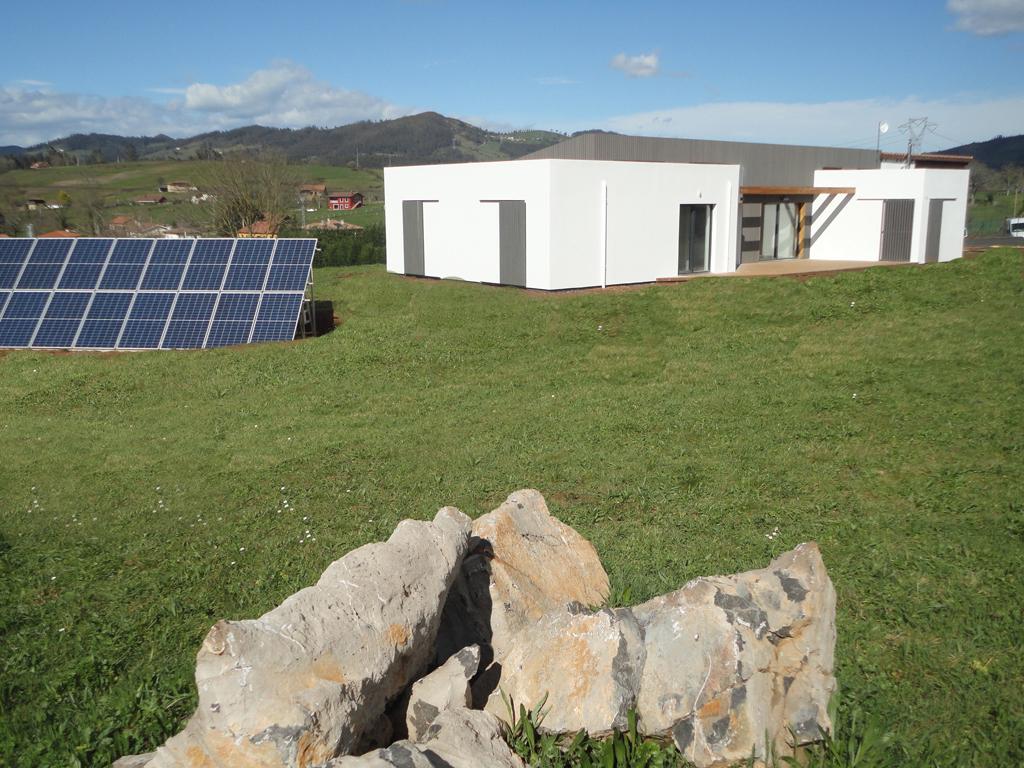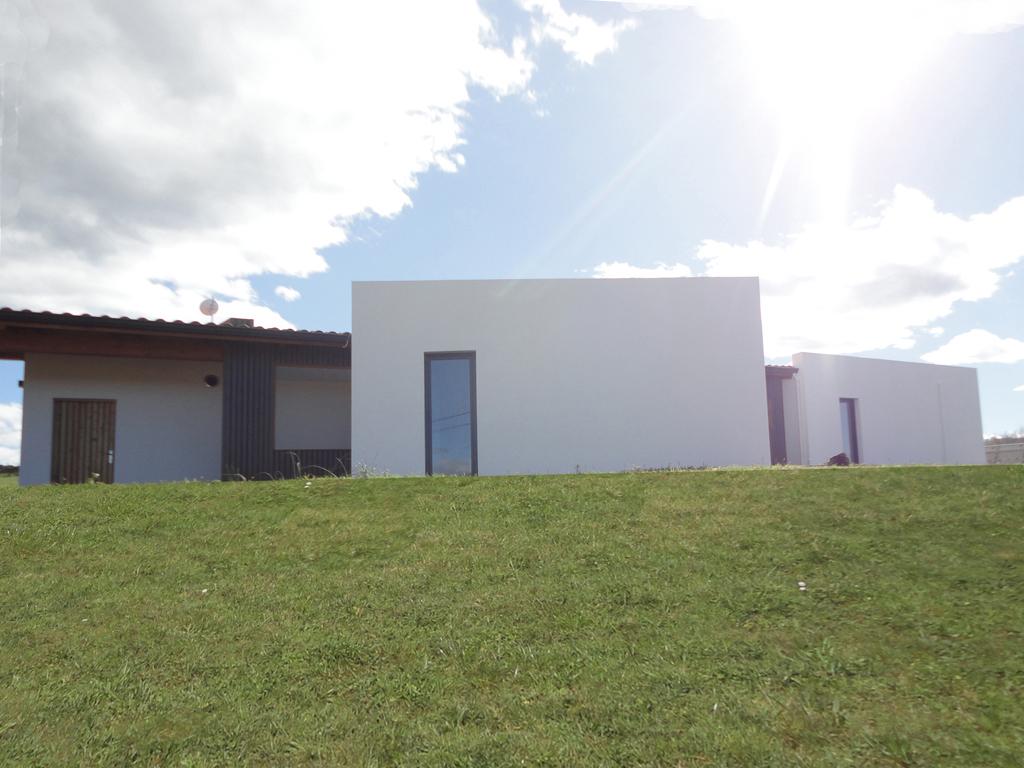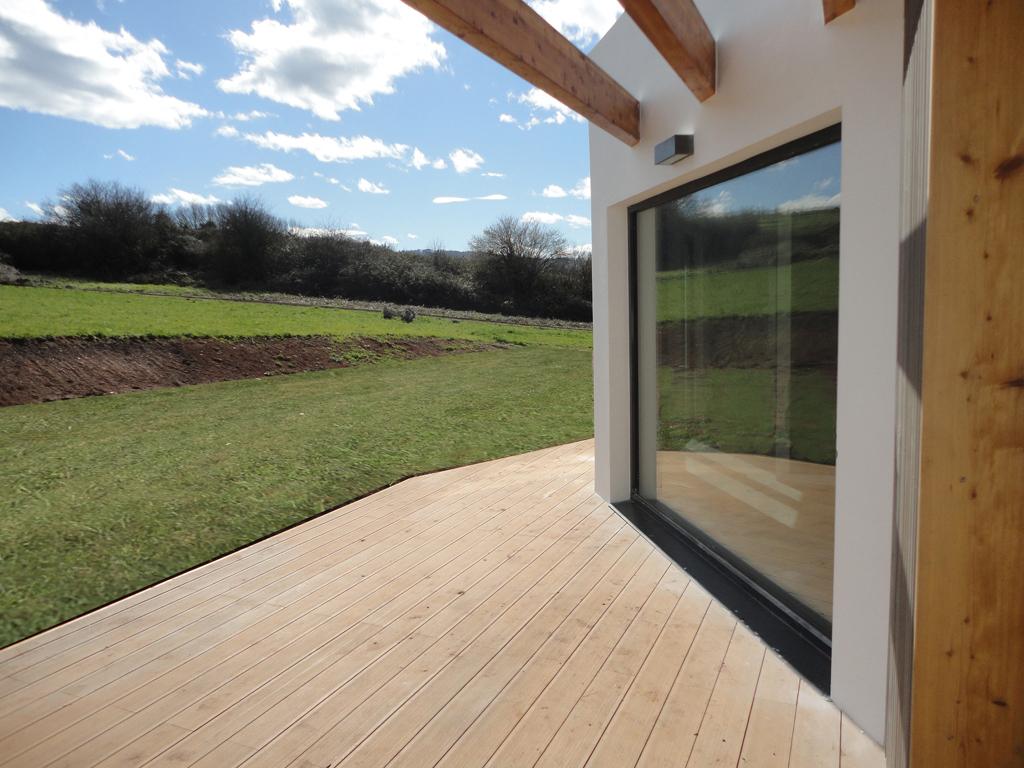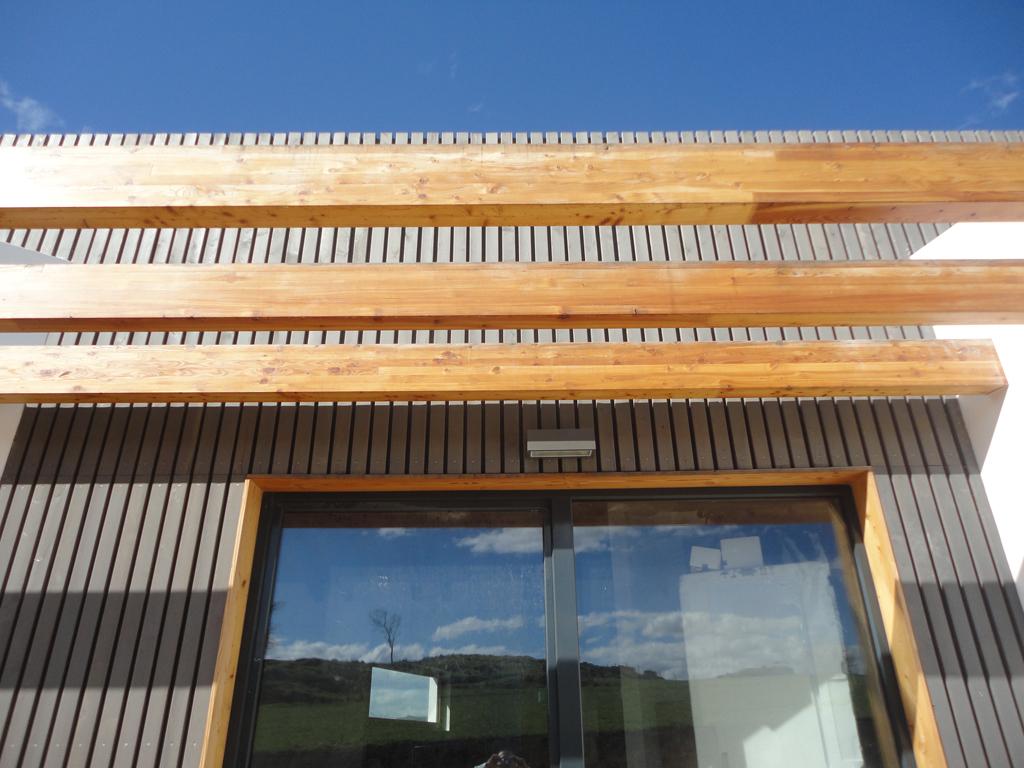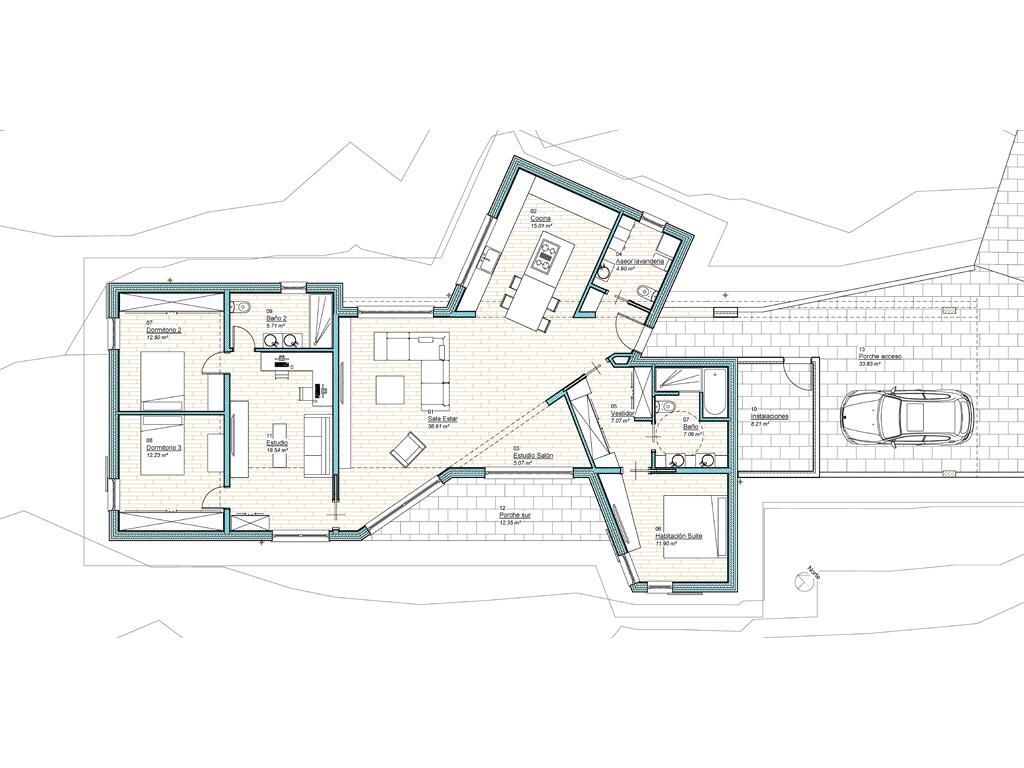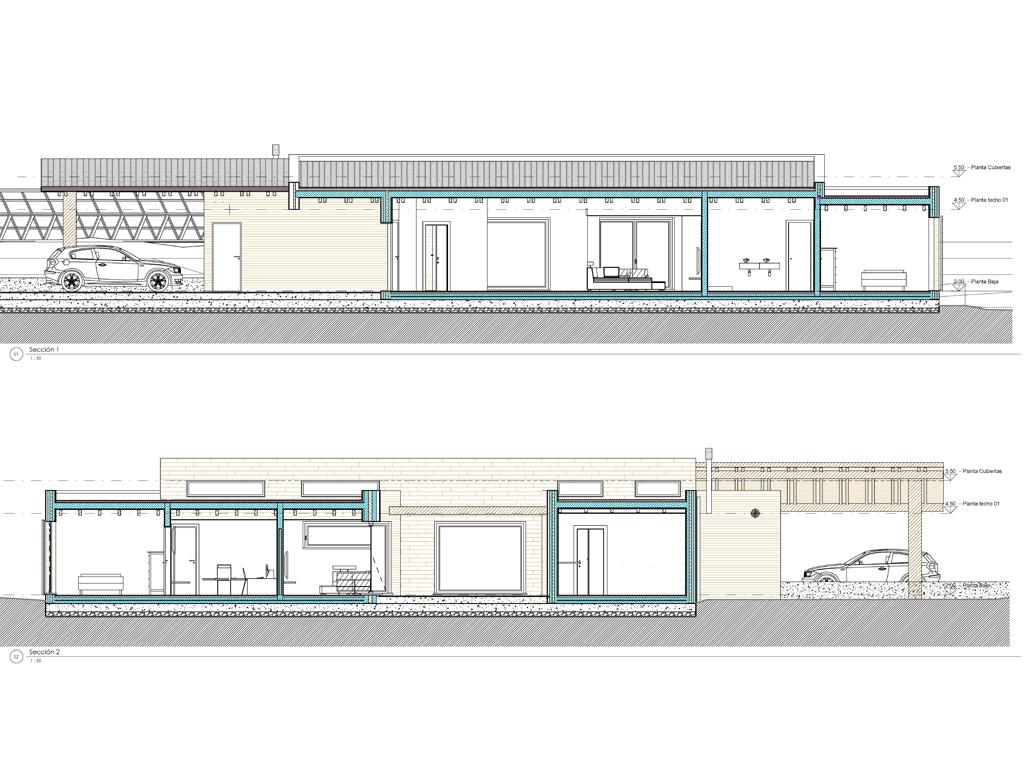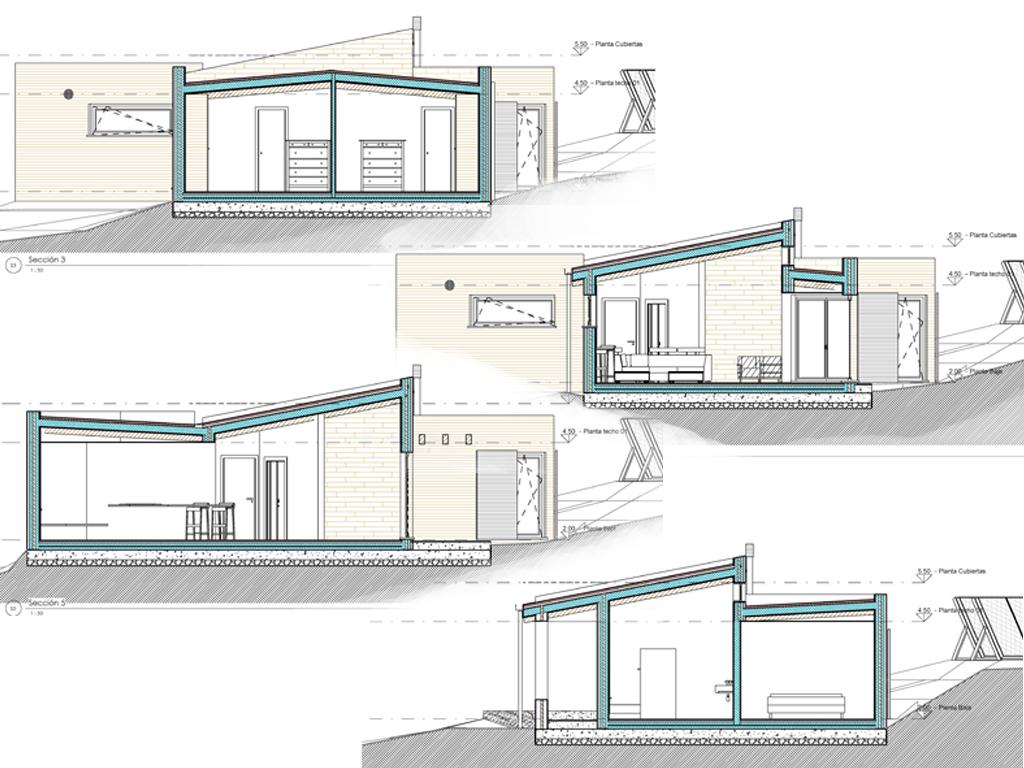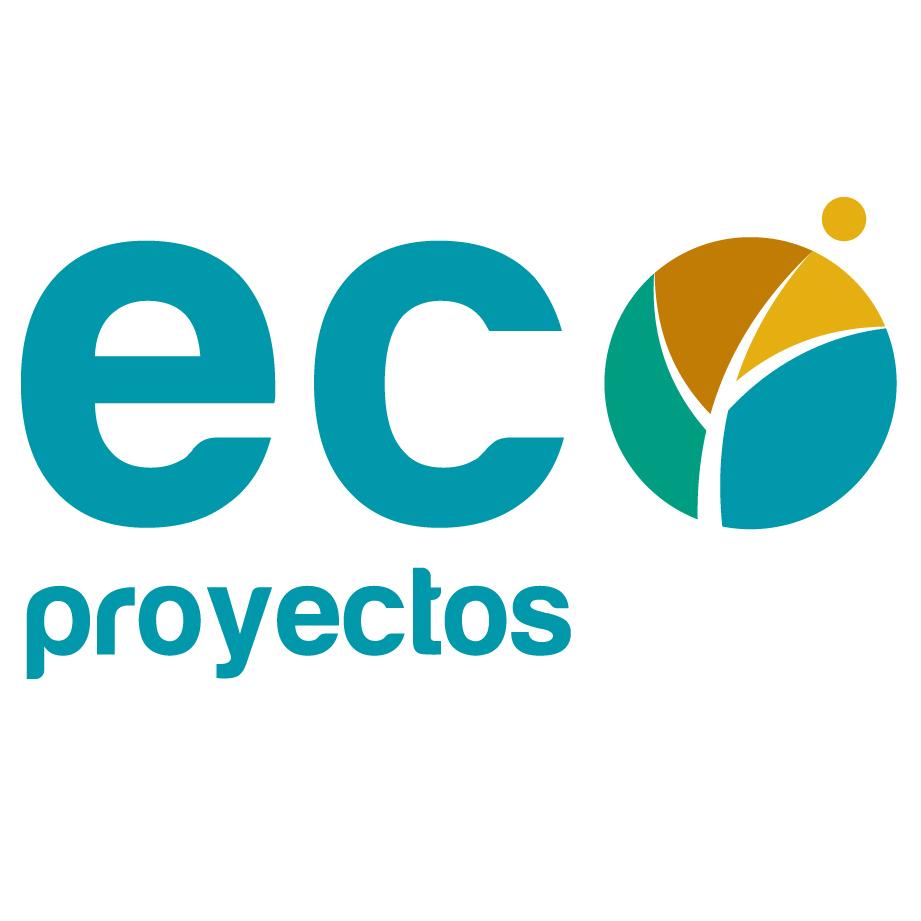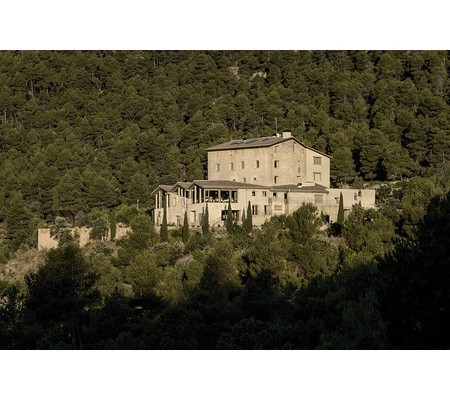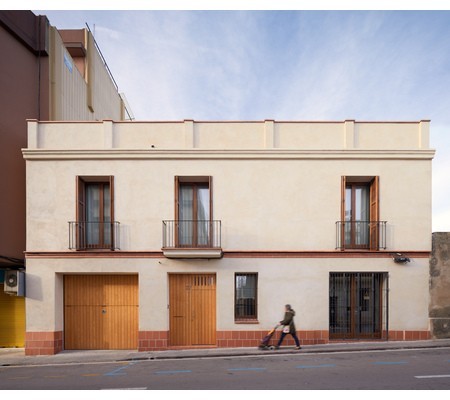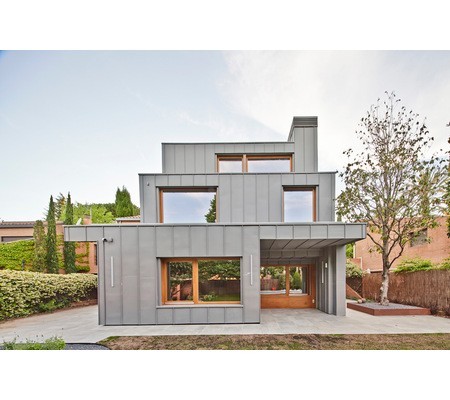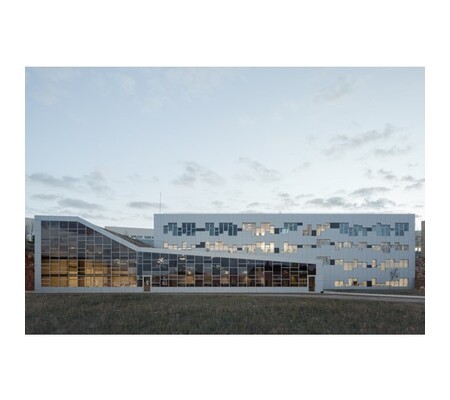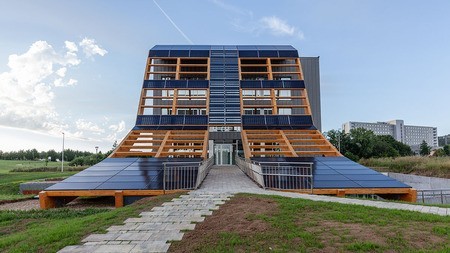Disconnected Tuernes Passivhaus
New Construction
- Building Type : Isolated or semi-detached house
- Construction Year : 2016
- Delivery year : 2016
- Address 1 - street : 33425 LLANERA, España
- Climate zone : [Cfc] Marine Cool Winter & summer- Mild with no dry season.
- Net Floor Area : 193 m2
- Construction/refurbishment cost : 289 000 €
- Number of Dwelling : 1 Dwelling
- Cost/m2 : 1497.41 €/m2
-
Primary energy need
57 kWhpe/m2.year
(Calculation method : RD: 47/2007 )
Detached detached house, without connection to the electric network (without invoice !!!). Designed under Passivhaus criteria in the process of being certified as Passivhaus Plus, low environmental impact with zero emissions. To achieve this, we have worked from a variety of perspectives:
- Architecture: design as a savings tool, passivhaus concepts.
- Construction: sustainable and respectful with the environment, with execution time of 8 months, industrialization of the construction process.
- Environmental engineering: analysis of CO2 emissions.
- Efficient installations: equipment of low consumption and high efficiency for ventilation, heating and lighting taking its dependence to the minimum expression.
- Renewable energy: photovoltaic electricity production with zero consumption objective. On the other hand, biomass as a non-fossil fuel and CO2 emission neutralized for the winter period.
- Domotic: monitors, manages and reduces consumption, facilitating the control of all this at a distance for both the user and the installation companies.
See more details about this project
http://www.ecoproyectosweb.com/trabajos/unifamiliar-passivhaus-renovablesData reliability
Self-declared
Stakeholders
Designer
ECOproyectos
Marcos Baptista Riesgo
http://www.ecoproyectosweb.comDevelopment of previous studies for Passive housing with maximum final cost commitment and energy efficiency objective. Drafting of architectural projects. Project Management and Project Manager.
Contracting method
Other methods
Owner approach of sustainability
The project starts from a basic premise, optimizing the design both for the control of running costs and for the costs of use, enjoyment and maintenance, with a goal: zero emissions housing.
Architectural description
DESIGN: as a saving tool. Based on the needs of a specific functional program and defined by the future users, an initial distribution scheme based on a central space, the housing lung, is proposed, which will concentrate the day activities benefiting from a 360º relation to the exterior. In those places where it is linked with the rest of stays, its height will surpass them in order to be able to maintain at least a visual and luminous link towards the outside. Clear and dynamic spaces, and minimal paths. From there, the passive design begins to work, the detailed study of the geometries and composition of the thermal and constructive envelope finish to generate the final composition whose thermal load of heating is inferior to 15w / m2. All the geometry has been modeled and analyzed to obtain the best performance taking advantage of the solar radiation as well as heat or light load. CONSTRUCTION: sustainable and respectful towards the environment. Wood is chosen by its balanced environmental impact, its ease of industrial machining, the recyclability, the maneuverability, the transformation, and especially its low thermal conductivity make that it is the base element of the constructive nucleus, sometimes hidden and others in sight. All this to achieve an adaptive constructive system that allows to cover with assurances the diverse needs that today demands a housing (structural, thermal, acoustic, hygrometric, energy, aesthetic, etc ...) with automated processes that favor the profitability of the execution. ENVIRONMENTAL ENGINEERING: analysis of CO2 emissions under UNE standards to confirm a final net impact or even negative neutralizing more CO2 than it is emitted. For this, the design, the materials, the logistics, the construction process, and the lifespan of the house are evaluated. EFFICIENT FACILITIES: incorporation of equipment of low consumption and high efficiency for ventilation, heating and lighting taking its dependence to the minimum expression. Dual-flow ventilation systems with heat recovery and post-heating allow to unify heating and ventilation under a single system sized so that the thermal load is provided by the volume of renewal air. RENOVABLES: Given the current situation of photovoltaic components that present an advanced development with high guarantees and the lowest production costs in its history, we can now begin to propose its integration in projects of net balance or close to zero consumption. It is a question of seeking a support system that guarantees a reduction of the electric bill that amortizes its investment pending the future regulatory changes towards a net balance. On the other hand biomass as a non-fossil fuel and neutralized CO2 emission, renewable fuel for ACS and CLF, with a reduced use mainly to the winter period and point moments where the solar radiation is minimal. The implantation of a photovoltaic system for the electric power of the house dimensioned for the winter conditions generates surpluses, especially summers in summer that are derived to the ACS system by means of resistances. DOMOTICS: a component that in this case adopts an essential participation in the whole. It is the system that monitors, manages and reduces consumption, facilitating the control of all this at a distance for both the user and the installation companies. Simple functions such as control of lighting, ventilation and heating depending on occupancy automatically, elimination of residual consumption or stand by, automation of sun shades or blinds, etc ... substantially reduce energy demand and consequently the profitability of the joint solution.
Energy consumption
- 57,00 kWhpe/m2.year
- 225,00 kWhpe/m2.year
Envelope performance
- 0,15 W.m-2.K-1
- 0,40
Real final energy consumption
2 017
Systems
- Wood boiler
- Solar Thermal
- Wood boiler
- No cooling system
- Nocturnal ventilation
- Double flow heat exchanger
- Solar photovoltaic
- Biomass boiler
- 98,00 %
Smart Building
Product
Photovoltaic panel
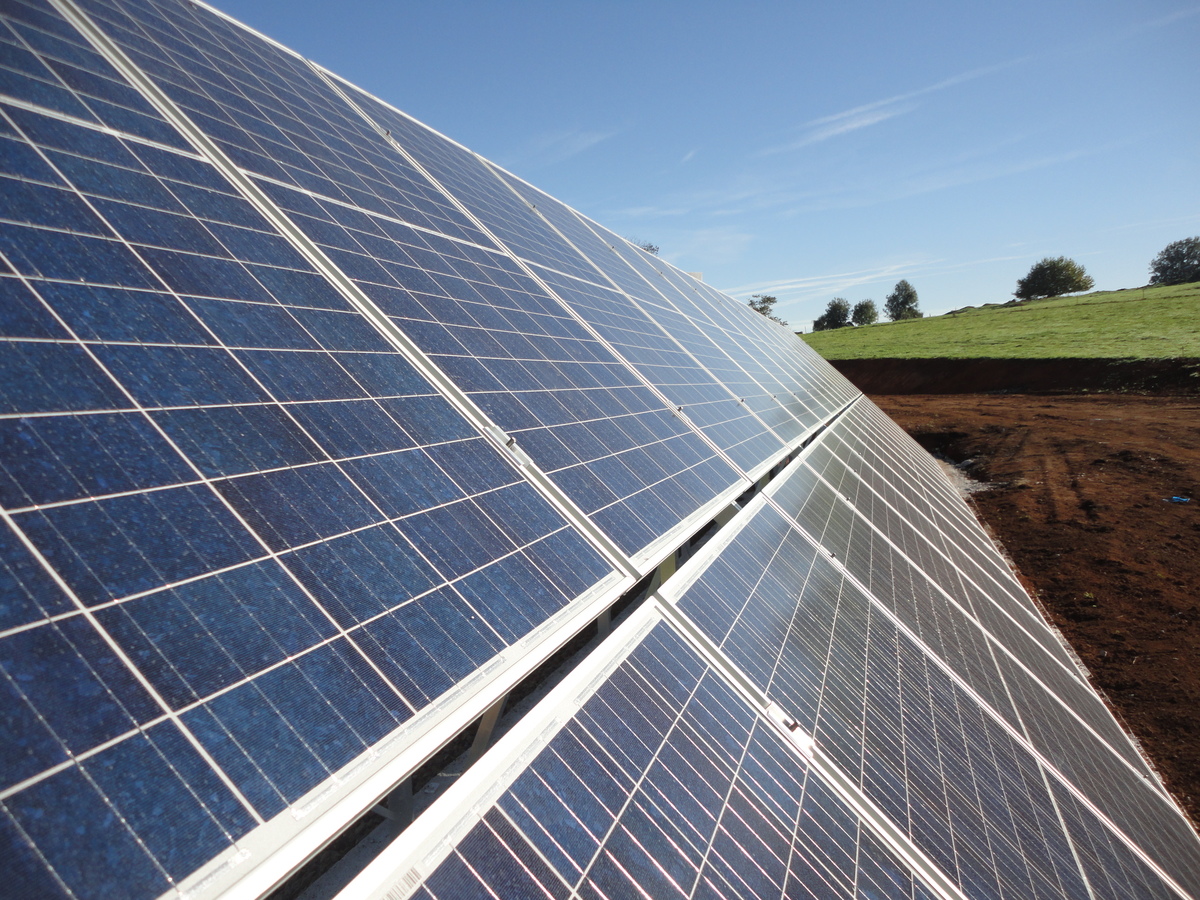
Rec
Ecoproyectos
http://www.recgroup.com/enManagement / Others
The building where this installation takes place has an average daily winter consumption of 10 kWh. For this reason, the dimensioning of the photovoltaic collection and storage tries to guarantee a total coverage and without dependence of the generator in 96% of the days of the year according to the data of the last annual record for the location of the action.
The system covers 100% of the electric demand as long as the solar radiation exceeds 1.2 kWh / m2.
This housing disconnected from the electricity grid has a photovoltaic field on a hearth composed of thirty two photovoltaic panels as described.
Photovoltaic Batteries
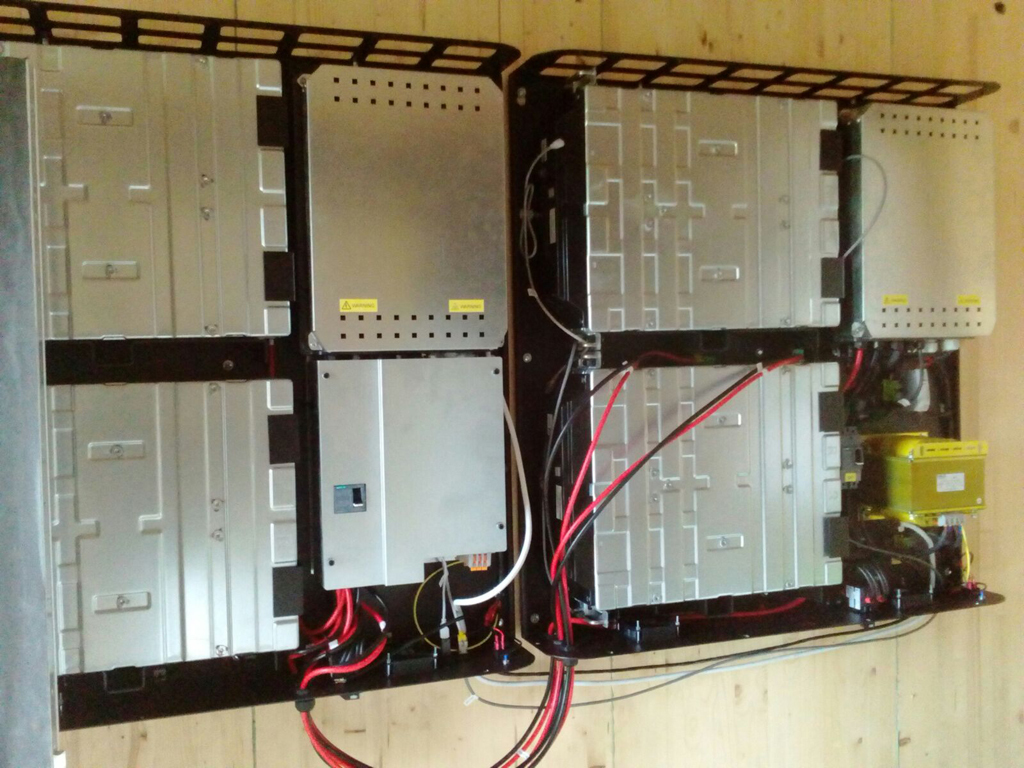
Ampere energy
http://www.ampere-energy.es/Management / Others
A new scheme is proposed in front of the traditional scheme of photovoltaic plate connected through a regulator to batteries and these, in turn, linked to an inverter depending at all times of the storage with associated losses and the wear of the same.
As long as there is demand for electric energy and solar radiation, it is passed directly from the inverter to the interior of the house, avoiding dependence on the use of batteries, increasing the efficiency of the system to 95-97%. Whereas in traditional systems this efficiency does not exceed 70%.
When the demand is higher than the solar input the management unit takes 100% of the solar production and completes the necessary rest with the stored in the batteries.
When the production is higher than the demand the surplus goes directly to be stored. In this particular case given the size of the photovoltaic field, with a radiation of 4-5 kW / m2, typical of sunny days, even in winter, we could completely fill the batteries installed due to linear loading without front stabilization processes To the traditional employees hitherto.
When the solar resource is null, the system becomes completely dependent on the batteries, being able to discharge them up to 95% of its capacity without affecting its warranty and useful life. At that point, even beforehand, with a certain margin, according to the one indicated by the user, the system will notify us the lack of reservations. In this situation depending on the installed generator can activate an automatic start or manual to give the load that we need until the recovery of solar radiation.
It allows to see the state of charge of the device, to consult the consumption and see the electricity price of the electricity grid and monitor the power generation of the photovoltaic panels, all with the option of visualization in real time. The additional schematic mode to display information from the latest (most recent) record in a dynamic and simple way. It also includes a history for past queries of all the options, so you can quickly access them and track status changes.
You also have the possibility to have several computers controlled from the same application, turn off or switch on electrical devices remotely from your mobile and even configure informative alerts.
Controlled mechanical ventilation with heat recoveror
Siber
https://www.siberzone.es/
https://www.siberzone.es/Climatización / Ventilación, refrigeración
Renovent Excellent 300 4/0 (3/1) (Plus). Controlled mechanical ventilation machine with certified Passivhaus heat recuperator. Yield 84%
Thanks to this product we not only achieve energy savings but also a clean and free of impurities.
Pellet boiler
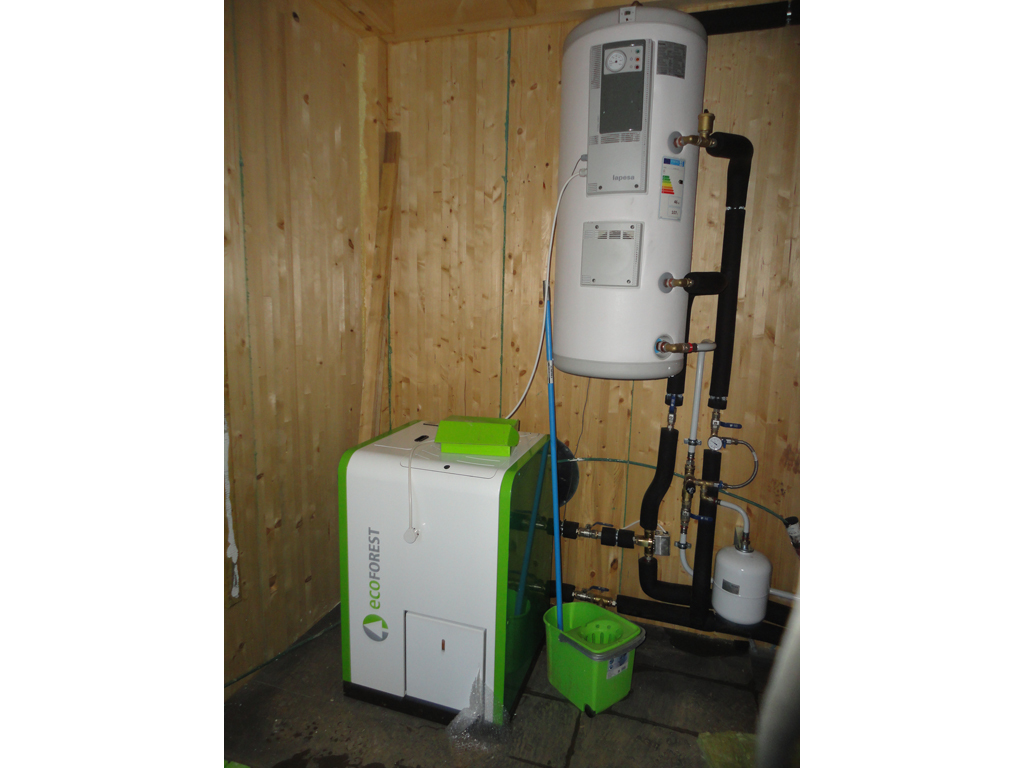
Ecoforest
http://www.ansoltec.com/Climatización / Calefacción, agua caliente
The boiler is placed in the room of installations and emits through water radiators that are placed embedded in the partitions
Construction and exploitation costs
- 367 466,00 €
- 1 443,00 €
- 152,00 €
- 2 845 €
- 288 722 €
Energy bill
- 320,00 €
Urban environment
The ground where this construction takea place, locally known as La Muria, is located on the edge of the neighborhood road about 100 meters from the main road of Tuernes. It is surrounded by dispersed single-family buildings, with a varied aesthetic, dissonant, predominating the rustic properties not built. The plot presents a considerable increasing slope from north to south, with percentage in some points of 15%. At the highest part of the plot to the south, any visual reference to the environment is lost, while the north orientation shows a wide and detailed view of the foreground and background environment. The climate is warm and temperate in Posada de Llanera. There is rain throughout the year at Posada de Llanera, and even the driest month still has a lot of rain. According to Köppen and Geiger climate is classified as Cfb. The average annual temperature in Posada de Llanera is 13.3 ° C. There are around 852 mm of rain.
Land plot area
4 550,00 m2
Built-up area
201,00 %
Building Environmental Quality
- Building flexibility
- indoor air quality and health
- energy efficiency
- renewable energies
- building process




